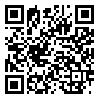BibTeX | RIS | EndNote | Medlars | ProCite | Reference Manager | RefWorks
Send citation to:
URL: http://jha.iums.ac.ir/article-1-2296-en.html
2- Population-based Cancer Registry, Comprehensive Cancer Center, Mazandaran University of Medical Sciences, Sari, Iran ,
Introduction: Statistical information systems are used to gather, document, classify and analyze the data and statistics of an organization and distribute this statistics for upper managers. Medical sciences universities in Iran use such a system, called Farabar. This study conducted to evaluate the usability of this national statistical information system in medical sciences universities in Iran.
Methods: This applied, analytical study was conducted in 2015. In the study, 278 managers and staff who were the users of Farabar in 13 different medical universities of Iran were randomly invited to participate in the study. We used the ISO Isometric 9241.10 usability questionnaire, following reliability and validity testing. We analyzed data using descriptive and inferential statistics ( t-test and ANOVA) by using SPSS 20.
Results: The mean score for different dimensions of ISO Isometric 9241.10 usability were as follows: suitability for the task (2.94 out of 5), self-descriptiveness (2.74 out of 5), controllability (2.74 out of 5), conformity with user expectations (2.86 out of 5), error tolerance (2.5 out of 5), suitability for individualization (2.46 out of 5) and finally, suitability for learning (2.75 out of 5). There were statistically significant relationships between perceived usability and users’ job history, age, working years with Farabar and other statistical software, perceived importance of Farabar and the types of usage.
Conclusion: Farabar software were relatively successful in terms of usability However, dimensions such as error tolerance and suitability for individualization requires more attention.
Received: 2016/12/31 | Accepted: 2018/01/20 | Published: 2018/03/17
| Rights and permissions | |
 |
This work is licensed under a Creative Commons Attribution-NonCommercial 4.0 International License. |






